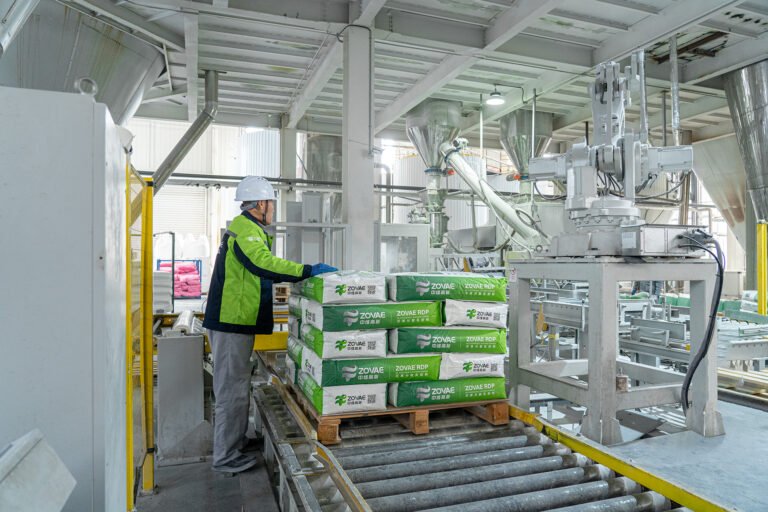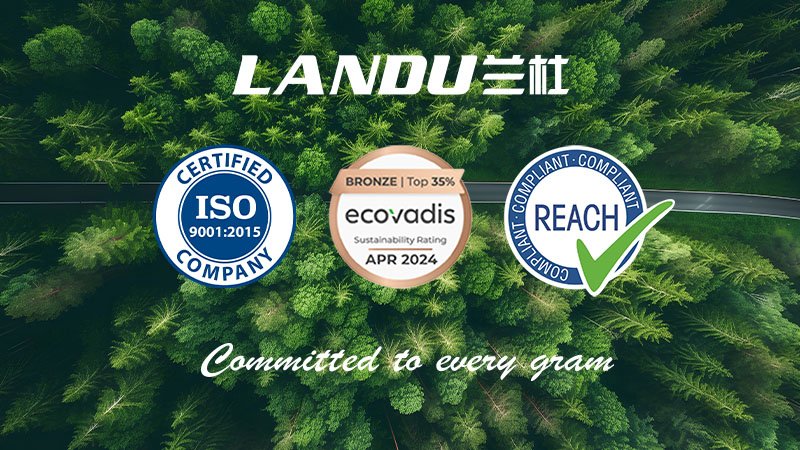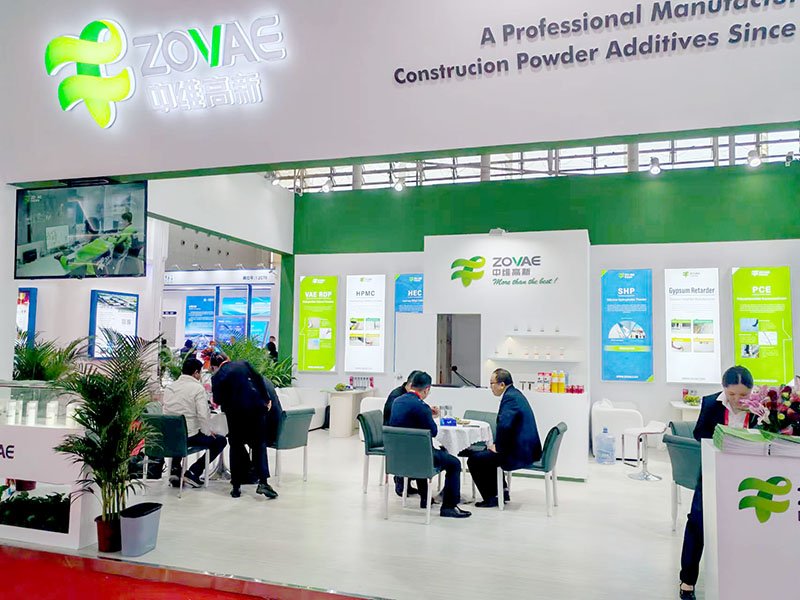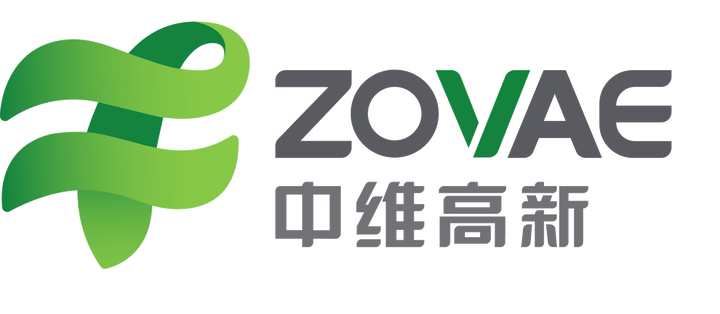1. Overview
Tile adhesives underpin the installation of various tile types, including ceramic, porcelain, vitrified, and oversized formats, across both flooring and wall applications. Two critical performance-enhancing additives—Zovae Redispersible Polymer Powder (RDP) and Landercoll Cellulose Ether (HPMC/MHEC)—synergize to elevate the efficacy of these adhesives throughout the application process.
When integrated properly, these components significantly improve flexibility, moisture retention, bonding strength, workable time, and sustained durability. This article delves into how Zovae RDP and Landercoll Cellulose Ether influence tile adhesive characteristics, offering actionable insights on technical specifications, formulation strategies, and practical application techniques.
Redispersible Polymer Powder (RDP) by Zovae
- Application Ease: Enhances manageability, stickiness, and smoothness, resulting in a more fluid troweling experience and improved contact with tile beds.
- Polymer Layer Creation: As it cures, it develops a cohesive, pliable polymer layer that fortifies adhesion to non-porous or dense surfaces (such as vitrified tiles, pre-existing tiles, or certain natural stones) and accommodates thermal or structural shifts.
- Resilience and Longevity: Increases pliability, resistance to cracking, and durability against environmental stressors like water exposure, freeze-thaw cycles (where applicable), and temperature fluctuations.
- Typical Compositions: Vinyl acetate-ethylene (VAE) copolymers offer a blend of bonding and flexibility; styrene-acrylic variants are chosen for enhanced water resistance or rigidity when required.
Landercoll Cellulose Ether (HPMC/MHEC)
- Moisture Preservation: Delays water loss to porous substrates or evaporation under arid or warm conditions, ensuring thorough cement hydration and robust adhesion.
- Usability and Workable Duration: Delivers a smooth, thixotropic texture and prolongs open time, allowing precise tile positioning, adjustments, and back-buttering as necessary.
- Vertical Stability and Air Management: Enhances anti-slip properties for wall applications; regulated micro-air inclusion reduces wet mix density and can bolster elasticity without sacrificing bond strength when dosed appropriately with defoaming agents.
Combined Effect
- RDP primarily enhances adhesion to challenging surfaces, flexibility, and enduring performance.
- Landercoll focuses on the wet-phase dynamics, managing moisture retention, extended open time, and slip prevention.
- Collectively, they support modern thin-bed adhesives, ensuring compliance with standards, minimizing rework, and enabling quicker, neater installations.
3. Comparing Traditional Thick-Bed and Modern Thin-Bed Tiling Approaches
Traditional Thick-Bed Technique
- Layer Depth: Ranges from 10 to 30 mm.
- Advantages: Compensates for uneven substrates and serves as a leveling base.
- Drawbacks: Time-consuming, labor-heavy, inconsistent outcomes; greater material usage and shrinkage potential.
Modern Thin-Bed Technique
- Layer Depth: typically 2 to 4 mm, applied using a notched trowel.
- Advantages:
- Superior bonding to dense materials (e.g., vitrified tiles, pre-laid tiles). For substrates like PVC or plastics, primers or alternative formulations are generally needed.
- Enhanced anti-slip on vertical surfaces, longer adjustment periods, and improved crack resistance with appropriate RDP selections.
- Eliminates tile pre-soaking; uniform thickness ensures better coverage and quality consistency.
- Accelerates project timelines, reduces material waste, and maintains cleaner work environments.
4. Key Performance Metrics (Standard Benchmarks)
Note: Benchmarks differ based on standards (e.g., EN 12004 classifications like C1/C2; modifiers T/E/S1) as well as environmental conditions, substrate nature, and tile characteristics. Always verify within your specific mix.
- Open Time: ≥ 20 minutes (extended “E” rating ≥ 30 minutes).
- Anti-Slip (T): ≤ 0.5 mm displacement on vertical installations.
- Initial Bond Strength (28 days): ≥ 1.0 MPa as a common goal for enhanced mixes; ≥ 0.5 MPa for basic mixes.
- Post-Water Immersion Strength: ≥ 0.5–1.0 MPa (specific target varies with C1 or C2 rating).
- Post-Heat Aging Strength: ≥ 0.5–1.0 MPa (target aligns with C1 or C2 classification).
- Flexural Capacity: ≥ 2.5 MPa typical for polymer-enhanced blends.
- Compressive Capacity: ≥ 6.0 MPa typical for indoor settings.
Tip: For higher classifications like C2TE or deformable categories (S1/S2), opt for more elastic or softer RDPs and adjust Landercoll viscosity or substitution levels to preserve open time while avoiding excessive sagging.
5. Guidance on Formulation
Base Binder and Fillers
- Cement Proportion: Start with ≥ 35% of the dry mix mass for robust bonding, particularly after water or heat stress. Increase for dense tiles or challenging surfaces.
- Sand/Filler Selection: Use clean, graded aggregates (max particle size 0.6–1.2 mm). Fine limestone can be incorporated to enhance packing density and troweling ease.
Polymer and Flow Modifiers (Initial Ranges by Dry Mix Weight)
- Zovae RDP: 2.0–4.0% for standard C1/C2 thin-bed applications; 3.0–6.0% for superior bonding to low-porosity surfaces or flexibility requirements.
- Landercoll Cellulose Ether (HPMC/MHEC): 0.20–0.40% for moisture control, workable time, and anti-slip; select viscosity grades to optimize trowel texture versus sag prevention.
- Optional Starch Ether: 0.02–0.06% to refine thixotropic behavior and anti-slip without excessive viscosity.
- Powdered Defoamer: 0.05–0.20% to reduce surface defects and improve wetting on dense tile backs.
- Hydrophobic Additives/Others: Include as needed for water-prone areas; always re-test bond strength post-water exposure.
Water Ratio and Mix Texture
- Water Addition: Generally 22–28% by dry mix weight (tweak based on sand particle distribution, RDP variant, and cellulose ether type). Target a smooth, ridge-holding consistency with the chosen trowel notch.
Substrate and Tile Factors
- Low-Absorption Tiles: Prioritize higher RDP levels (upper range) and ensure thorough wetting; back-buttering is advised for large tiles.
- Highly Absorbent Surfaces: Focus on Landercoll’s water retention to avoid early skinning and loss of open time.
6. Standard Application Protocol
Surface Readiness
- Confirm the substrate is clean, stable, even, and within acceptable moisture levels. Eliminate dust, grease, curing agents, or frail layers. For overly smooth or non-porous surfaces, mechanical roughening or primers might be necessary.
Mix Preparation
- Pour clean water into an appropriate container, then gradually introduce the dry mortar (with Zovae RDP and Landercoll Cellulose Ether) under low to medium mixing speed.
- Blend for 2–3 minutes until smooth; allow a 3–5 minute rest for complete polymer and cellulose activation; remix briefly prior to use. Avoid adding more water post-rest.
Trowel Application
- Select a notch size ensuring adequate coverage (often ≥ 80% for walls; ≥ 90–100% for floors or large tiles).
- Apply adhesive evenly, then use the notched edge to form consistent ridges. Stay within open time limits—if skinning occurs, reapply fresh adhesive rather than dampening the surface.
Tile Setting and Correction
- Firmly press and slightly shift or twist the tile to compress ridges and optimize contact.
- Make adjustments within the designated open time (typically 20–30 minutes, influenced by climate).
Curing and Load Application
- Shield from water, freezing temperatures, and heavy stress for 24–48 hours. Grout after roughly 24 hours (extend in cold or damp settings). Adhere to manufacturer recommendations for pot life and load-bearing timelines.
Ambient Conditions
- Optimal range: 5–35°C with moderate relative humidity. Hot, dry, or breezy environments reduce open time—limit working areas and enhance Landercoll retention properties if required.



